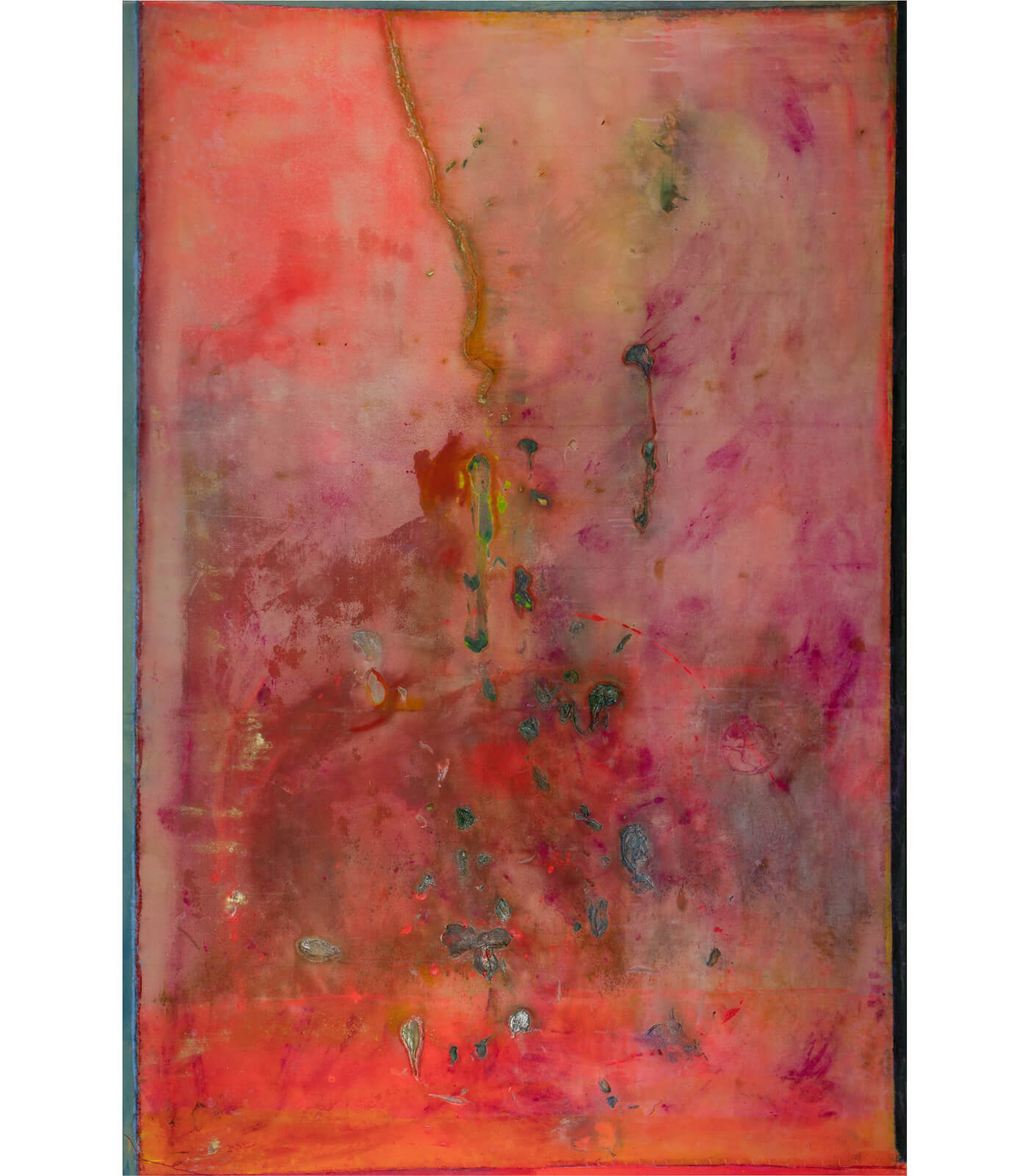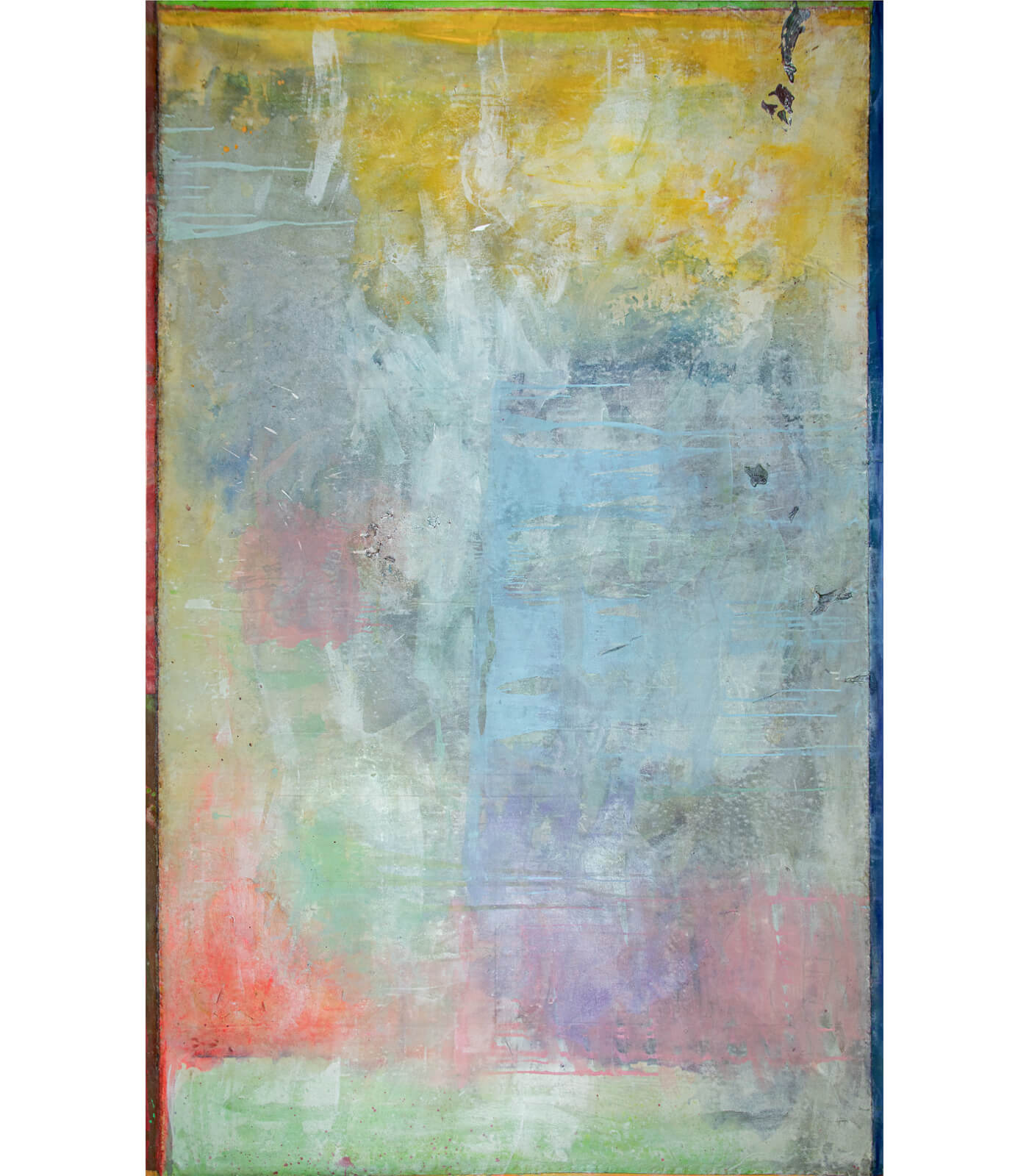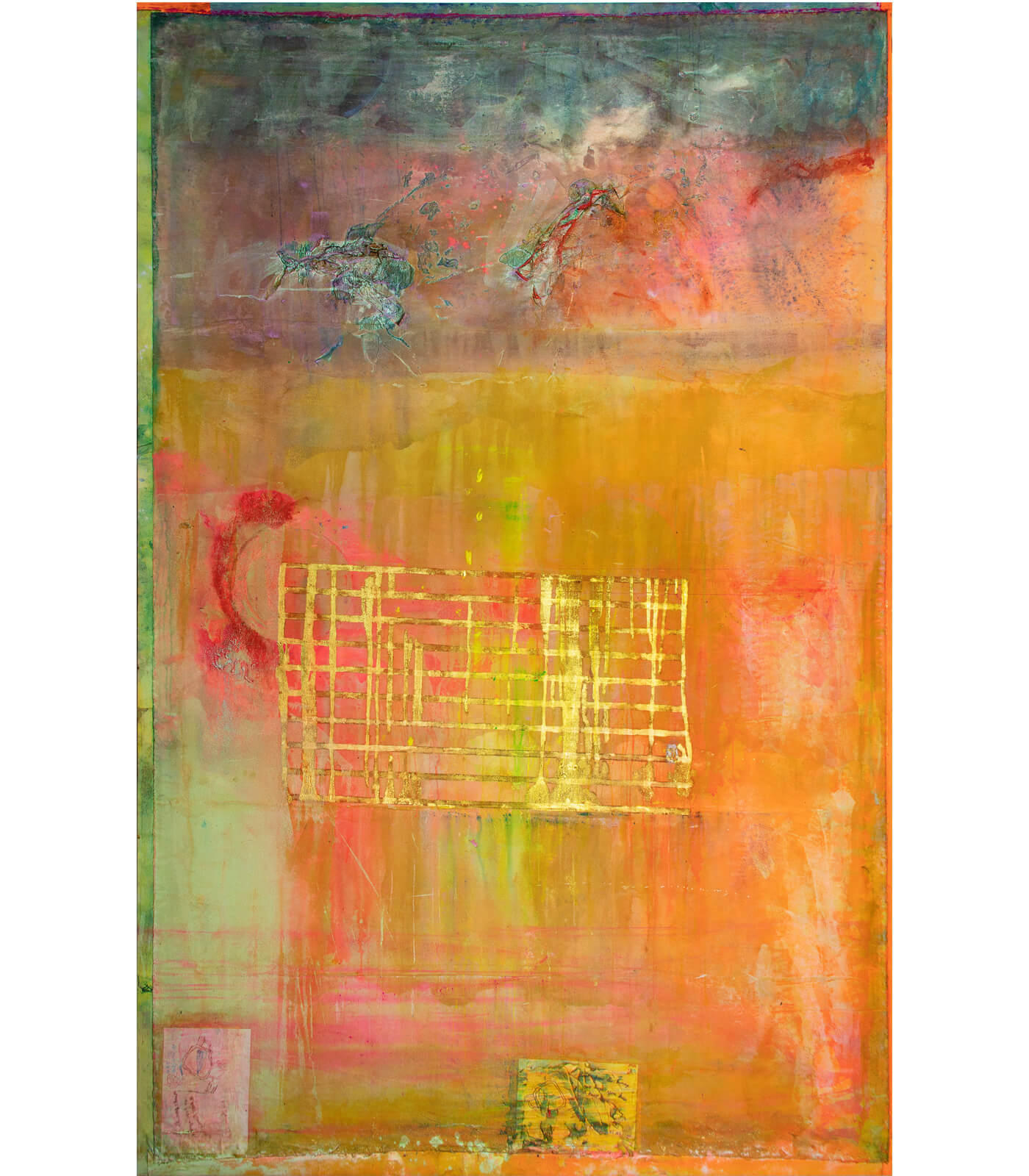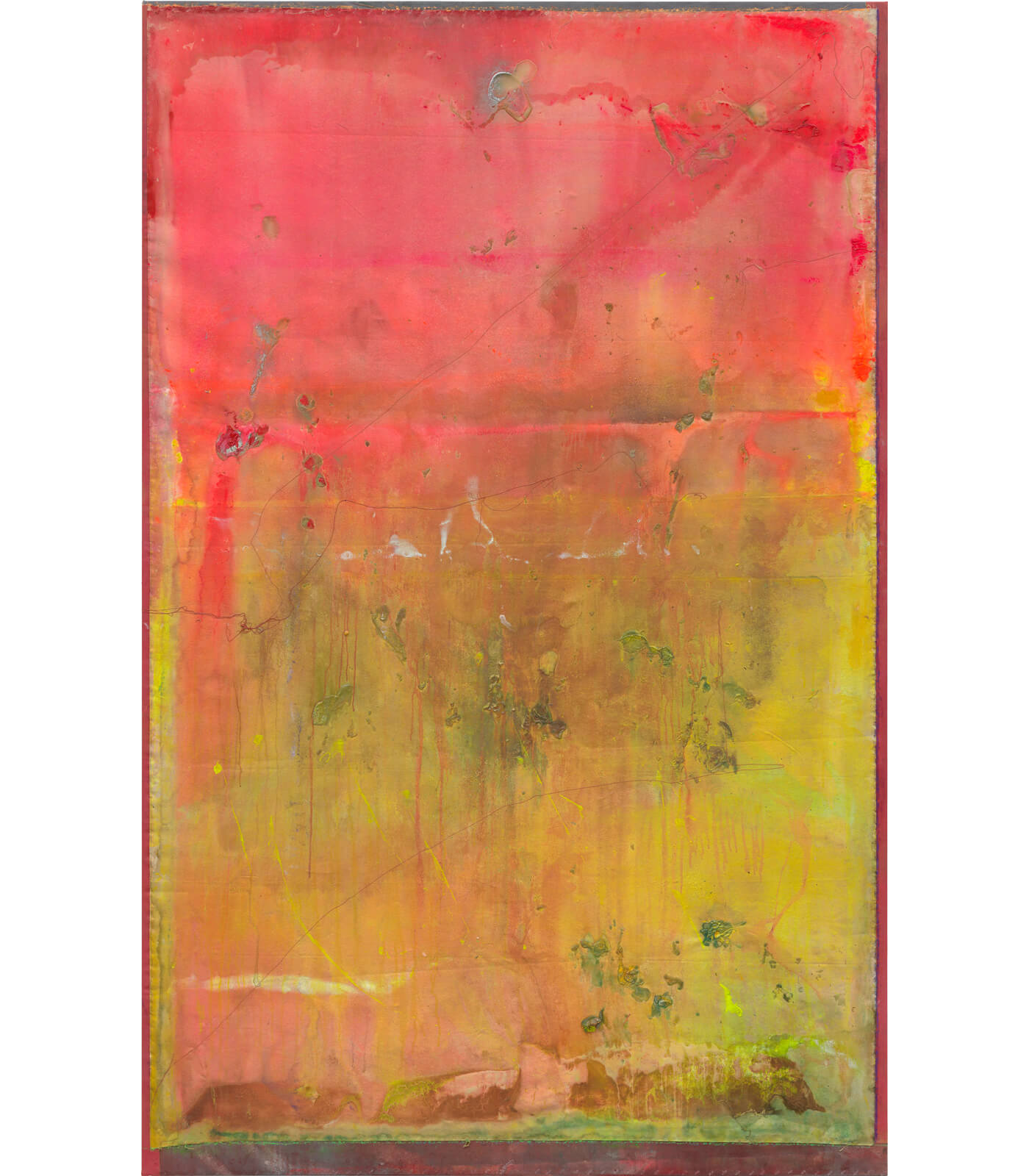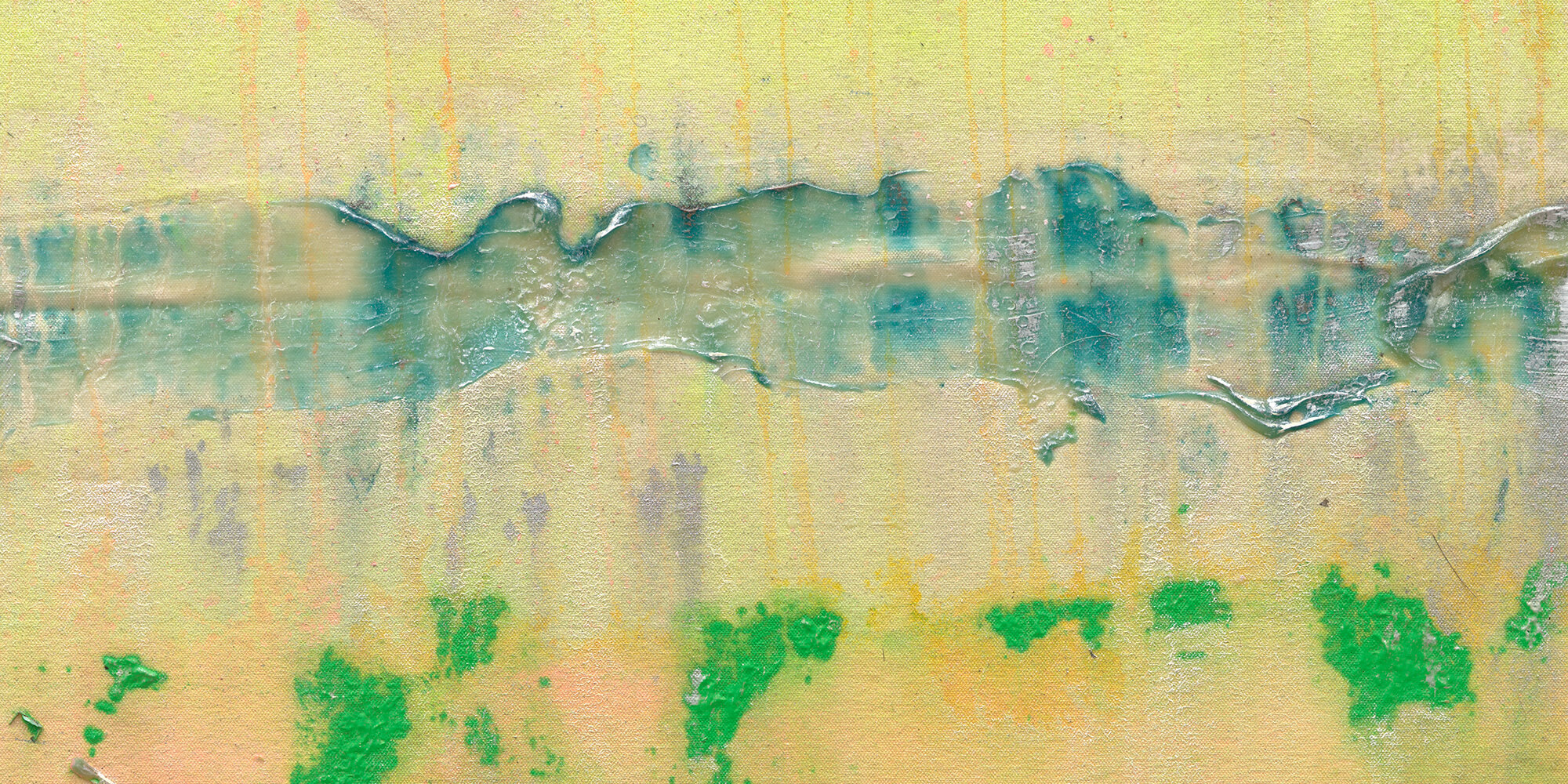
Frank Bowling
Penumbral Light
10 June – 20 August 2022
Zurich, Limmatstrasse
Over the course of six decades, Sir Frank Bowling has relentlessly pursued a practice which boldly expands the properties of paint. For the artist’s first solo presentation in Switzerland, coinciding with Zurich Art Weekend, ‘Frank Bowling. Penumbral Light’, displays recent abstract paintings made mostly during the London lockdown in 2020.
Explore the exhibition
Following a period of ill health for the artist in 2019, the works trace the renewed energy and dynamism that Bowling channelled in the studio during his recovery. His restless reinvention of the painted plane endures in this current body of work, which continues to break new ground through the artist’s use of multi-layered washes, thick impasto textures, acrylic gels, stitched canvas and metallic and pearlescent pigments.
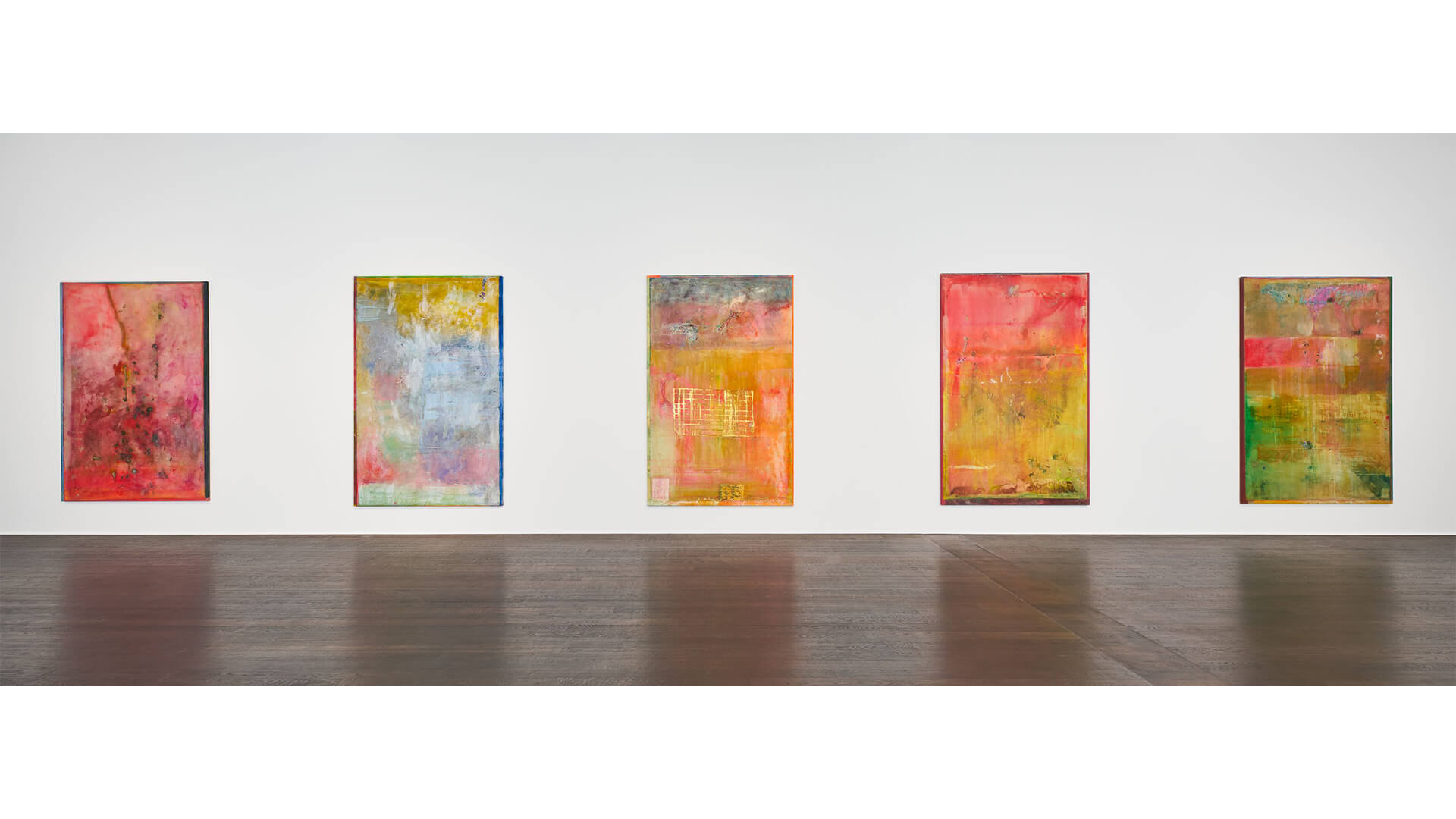
Employing a plethora of vivid hues in water-based paints, from acid greens and scorched yellows to neon pinks and deep reds, works such as ‘Towards the Palace of the Peacock’ (2020) and ‘Up a Tree’ (2021) evoke the vibrancy of past series, whilst highlighting a more relaxed and fluid approach to the artist’s painterly process. Aided by chance, Bowling submerges many of his canvases in water, then layers pigmented washes and allows drips of paint to merge, swirl and run across the canvas.
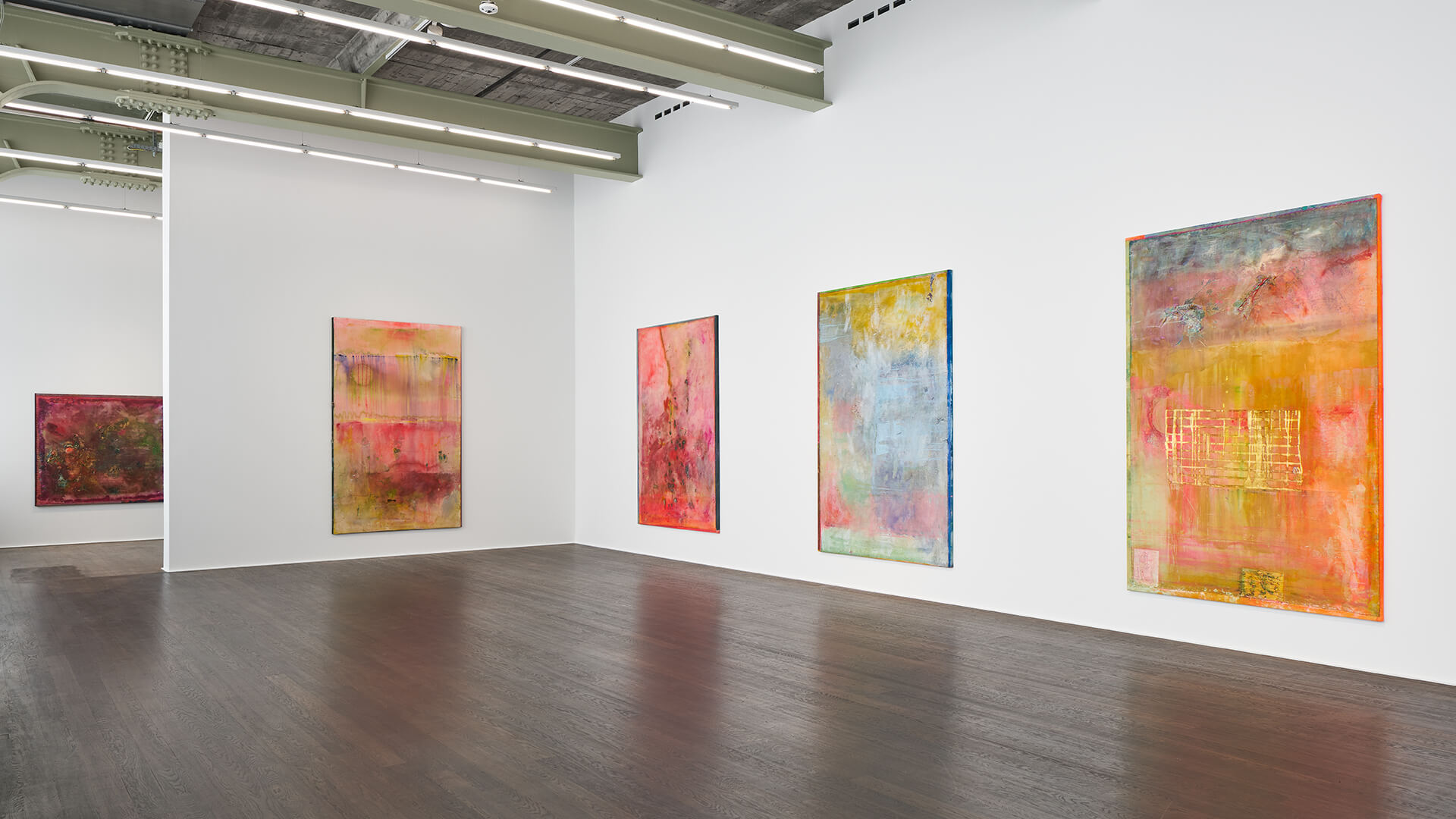
Bowling often intervenes in this process by using a handheld spray bottle to change the form and course of the running paint. Works such as ‘Watermelon Bight’ and ‘Oriented Light’ (both 2020) suggest the speed at which these droplets make their journey across the canvas. The themes of water, shorelines and memory are central to the works and are evoked through the dried areas of layered paint that become reminiscent of borders, as seen in ‘Penumbral Lite’ (2020), harking back to earlier series such as Bowling’s Map paintings from the 1960s.
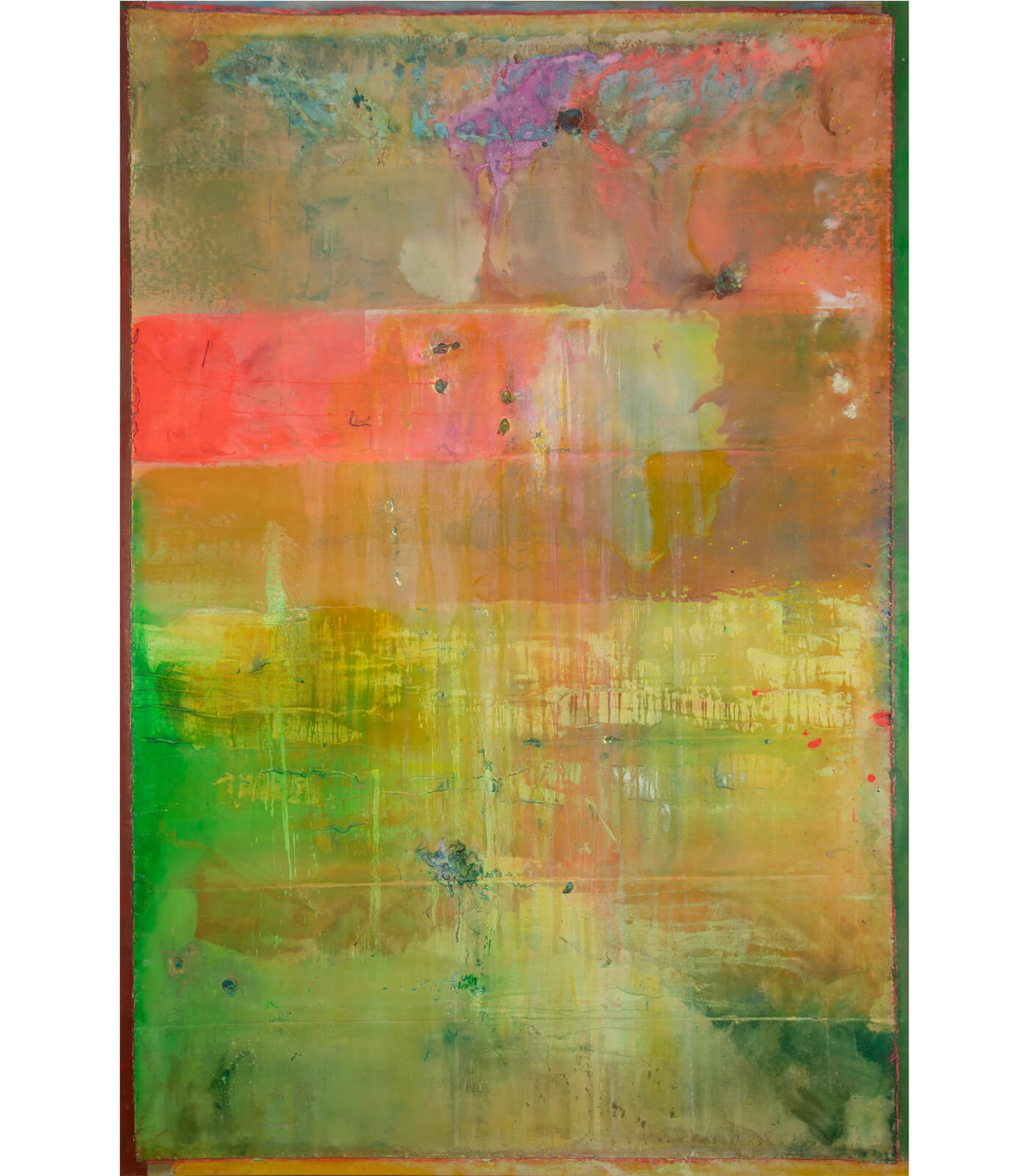
Up a Tree
2021
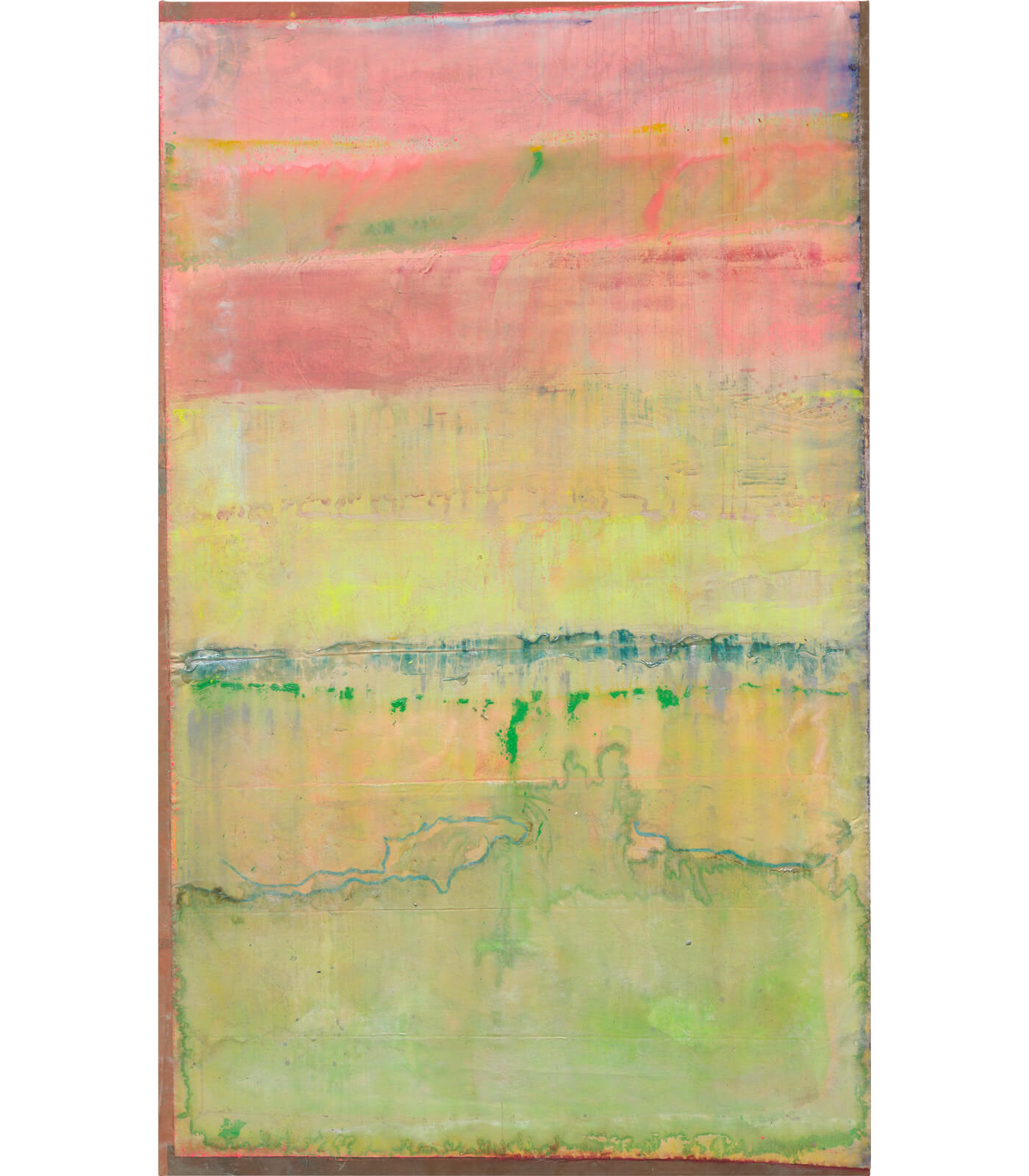
Penumbral Lite
2020
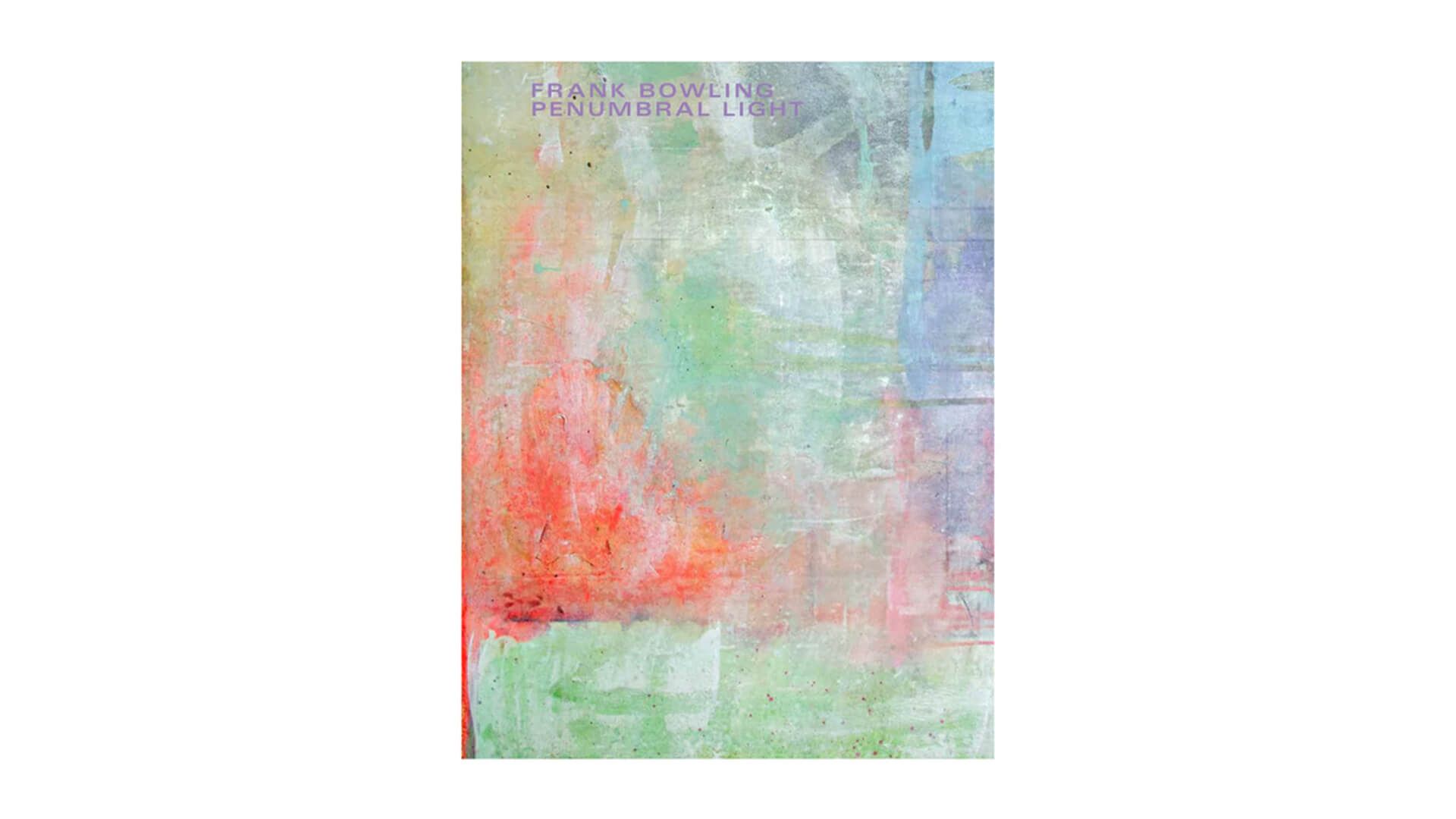
‘Frank Bowling: Penumbral Light’
‘Frank Bowling: Penumbral Light’ explores Frank Bowling’s obsessive inquiry into the materiality of paint. With a foreword by the artist’s son, Ben Bowling, and an essay-conversation by curator Gemma Brace, this publication grants readers access to a vibrant world made of water, color, transparency, surface, movement, and light.
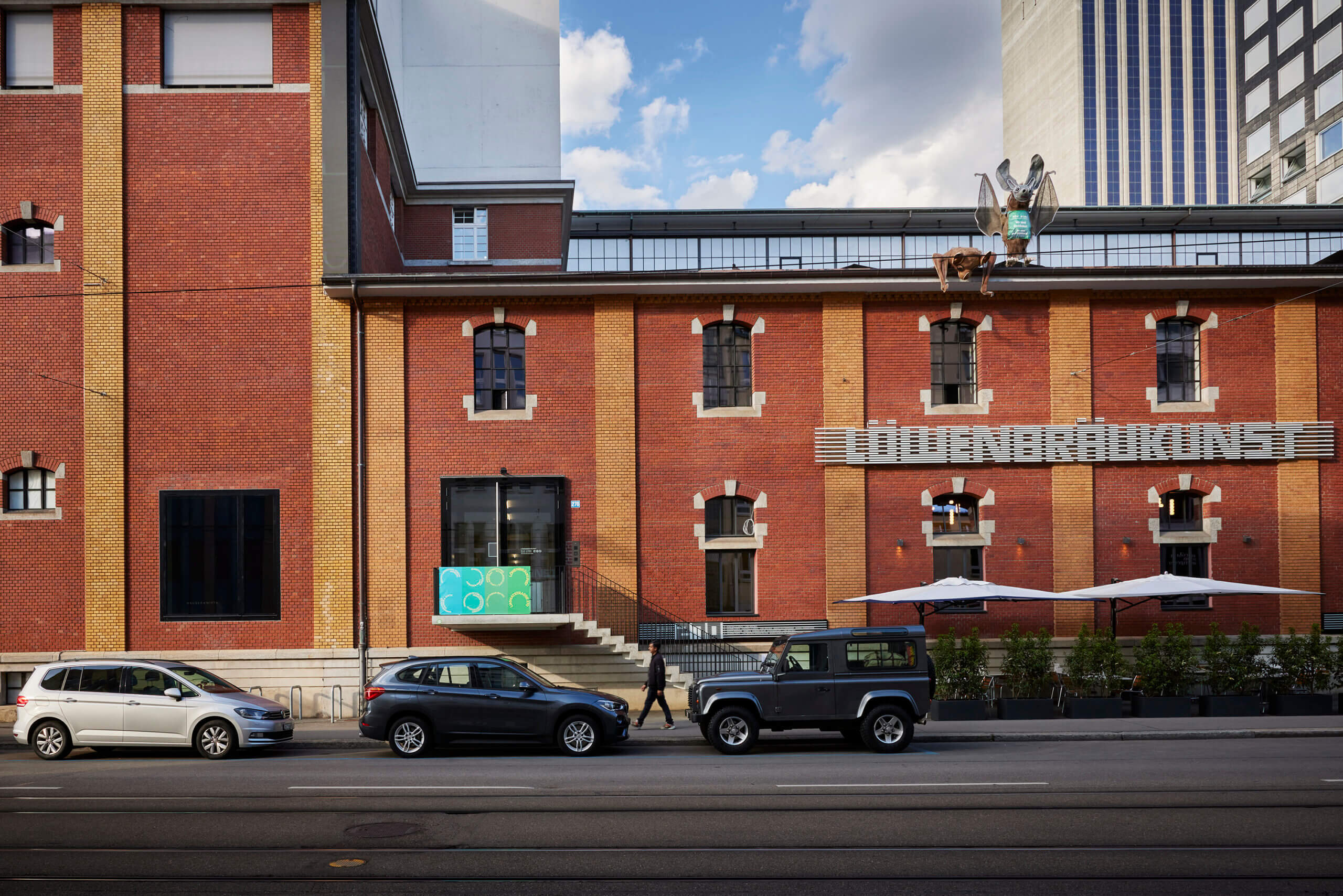
On view in Zurich, Limmatstrasse
The gallery is open Tue – Fri, 11 am – 6pm, Sat, 11 am – 5 pm. Please visit our location page to plan your visit.
About the Artist
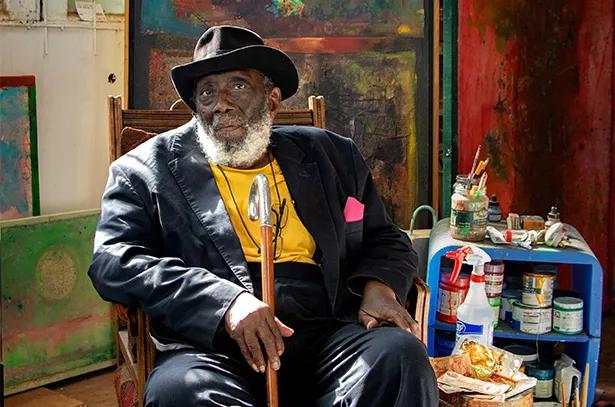
Frank Bowling
For over six decades, Frank Bowling has relentlessly pursued a practice which boldly expands the possibilities and properties of paint. Ambitious in scale and scope, his dynamic engagement with the materiality of his chosen medium, and its evolution in the broad sweep of art history, has resulted in paintings of unparalleled originality and power. Bowling has been hailed as one of the foremost British artists of his generation. Born in British Guiana (now Guyana) in 1934, he arrived in London in 1953, graduating from the Royal College of Art with the silver medal for painting in 1962. By the early 1960s, he was recognized as an assured force in London’s art scene. During this period, his highly individual language of painting, which emerged from expressionistic figuration and pop art, encompassed autobiographical elements and the artist’s socio-political concerns.
Bowling went on to divide his time between the art scenes in London and New York, maintaining studios in both cities. This transatlantic orientation was to see his early engagement with expressive figuration and pop art shift to an immersion in abstraction which continues in his practice today. Visible in his work are the legacies of both the English landscape tradition and American abstraction from which Bowling honed a distinctive vocabulary, combining figurative, abstract and symbolic elements. As Bowling has explained, ‘I was always very conscious of scratching out and of new interpretations replacing the old; updating traditions.’
A major reorientation in Bowling’s practice came in 1966 when he relocated from London to New York, at a time when the artistic scene was divided along lines of formalism and politics. In New York, Bowling pushed his work in new directions. He met Jasper Johns and engaged in a dialogue with his contemporaries, such as Jack Whitten, Mel Edwards, Al Loving, and Daniel Johnson. In 1969, Bowling organized, curated, and wrote the catalogue essay for ‘5+1’, a notable exhibition at the State University of New York, Stony Brook, and Princeton University showcasing the work of five African American abstract artists as well as his own recent paintings. He expressed frustration at the critical invisibility of Black artists and the narrow parameters by which his art and that of his peers was being assessed. Through his writings, as a contributing editor of Arts Magazine (1969-1972), he resisted what he saw as the reductive categorization of ‘Black Art’ as purely political in subject matter, staking a claim for abstraction.
By 1971, Bowling’s visionary approach to painting fused abstraction with personal memories. Concerns of color, surface and process gained in prominence resulting in his iconic series of ‘Map Paintings’, which include the stenciled landmasses of South America, Africa and Australia and were exhibited that same year at the Whitney Museum of American Art in New York. Over the years, the points of reference in his work reflect Bowling’s interest in a wide scope of art history, from Constable and Turner, to Barnett Newman and Mark Rothko. From 1973 to 1978, Bowling experimented with ideas of chance and ‘controlled accidents’, pouring paint from a two-meter height to create his visually arresting ‘Poured Paintings’, an expansion from color field painting.
Bowling returned to London in 1975 but continued to spend significant periods in New York. His sculptural paintings of the 1980s include embedded objects (newsprint, plastic and foam) and thickly textured canvases, and have been described as evoking landscape, riverbeds, and geological strata. In 1986, he exhibited a group of major new paintings at the Serpentine Gallery in London, curated by Ronald Alley, then Keeper of Modern Art at the Tate Gallery. Bowling shares Turner’s and Constable’s preoccupation with light, which is never more evident than in his expansive ‘Great Thames’ series of paintings of the late 1980s.
Today, Bowling’s mastery of the painted medium and explorations of light, color, and geometry incorporate the use of ammonia and multilayered washes. His restless reinvention of the painted plane endures in his current bodies of work which continue to break new ground through his use of thick impasto textures, acrylic gels, collage, stitched canvas, and metallic and pearlescent pigments. Bowling works every day in his South London studio, accompanied by his wife, Rachel, other family members and friends, forever driven by his fascination with exploring the vast and radiant possibilities of paint.
Bowling’s work has been exhibited extensively which has cemented his place in the post-war canon of contemporary and modern art. A turning point in Bowling’s career came in 2003 when his ‘Map Paintings’, which had been in storage and unseen since the early 1970s, were the centerpiece of the exhibition ‘Faultlines: Contemporary African Art and Shifting Landscapes’, at the 50th Venice Biennale. His work drew much attention and paved the way for him becoming a Royal Academician in 2005. Bowling was awarded the OBE for Services to Art in 2008 and a knighthood in the Queen’s birthday honors in 2020. His work is represented in over fifty collections worldwide and has been exhibited in numerous group and solo exhibitions, including the 2017–19 touring exhibition ‘Mappa Mundi’, the hugely successful retrospective at Tate Britain in 2019 and the major exhibition 'Frank Bowling: Americas’ which toured from MFA Boston to SFMOMA in 2022 - 23. Bowling is the subject of a BBC documentary, ‘Frank Bowling’s Abstract World,’ which coincided with the opening of the Tate retrospective. In 2022, he was awarded the Wolfgang Hahn Prize which honors exceptional contemporary artists.
Inquire about available works by Frank Bowling
On view now through 20 August 2022 at Hauser & Wirth Zurich, Limmatstrasse.
Related Content
Current Exhibitions
1 / 12


